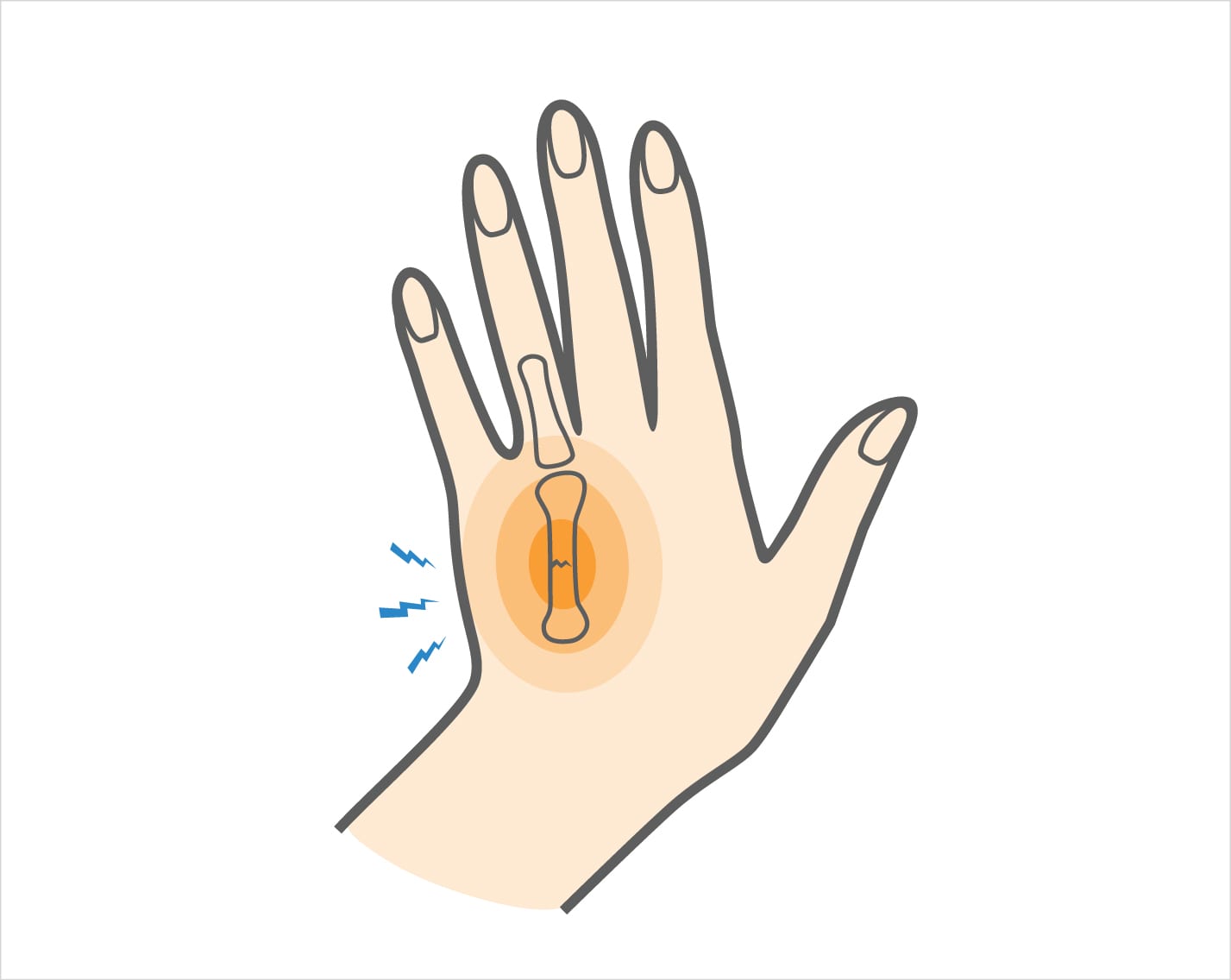When an athlete gets a finger jammed by a ball or an opponent, the finger can break, also known as a phalanx fracture. The soft tissues that support the fingers can also be damaged due to a fracture. A fractured finger can be a painful and debilitating injury, and proper medical diagnosis and treatment are needed to ensure a full recovery.
Metacarpal Fracture Causes, Symptoms & Treatment Options
When an athlete gets a finger jammed by a ball or an opponent, the finger can break, also known as a phalanx fracture. The soft tissues that support the fingers can also be damaged due to a fracture. A fractured finger can be a painful and debilitating injury, and proper medical diagnosis and treatment are needed to ensure a full recovery.
Overview
Overview

What causes Metacarpal Fracture?
Finger fractures most commonly happen after a finger gets jammed or twisted. This is a common injury for athletes, particularly those who play contact and ball handling sports. People with osteoporosis (decreased bone density) are also at greater risk for this injury.
Finger fractures are most common in these sports:
• Basketball
• Football
• Hockey
• Lacrosse
• Field Hockey
Symptoms
If you have a fractured finger, you’ll likely know it right away, as pain usually immediately follows the injury. Other common symptoms include:
• Swelling in the finger
• Tenderness and bruising at the fracture
• Lack of motion of the injured finger
• Finger looks deformed or crooked
When to see a doctor
Prompt treatment of a fractured finger is important to prevent long term damage that could limit your athletic performance. If you have symptoms of a hand fracture, you should see your doctor or go to an emergency room facility as soon as possible. Your doctor will perform a careful examination of your hand, looking for areas of pain, swelling, and tenderness, among other symptoms. X-rays will be needed to evaluate your fingers and confirm the diagnosis.
Non-operative treatment
Fractured fingers that still in alignment, or that can be moved into alignment, will typically be treated without surgery. Conservative treatments include:
• Immobilizing the broken finger with a splint or cast
• Taping the broken finger to its neighbor fingers to provide additional support
• X-rays taken intermittently to monitor how well your finger is healing
• Gentle finger motion to prevent stiffness in the fingers
You can also try these exercises at home:
Surgical Treatment
If the fractured ends of your fingers cannot be successfully aligned through conservative treatment, your doctor may recommend surgery. Open fractures where the bone punctures the skin also require surgical repair. Wires, pins, or screws may be used to secure the fractured metacarpal together. Your orthopedic surgeon can advise on the best treatment for you.
Recovery
Athletes with fractured fingers can expect to wear a splint or cast to immobilize their finger for one to four weeks. This may be followed by two weeks of limited exercise. Your doctor will advise you on when it’s okay to move your finger. Physical therapy during the recovery phase is common to reduce swelling and stiffness, and experite your return to play.

